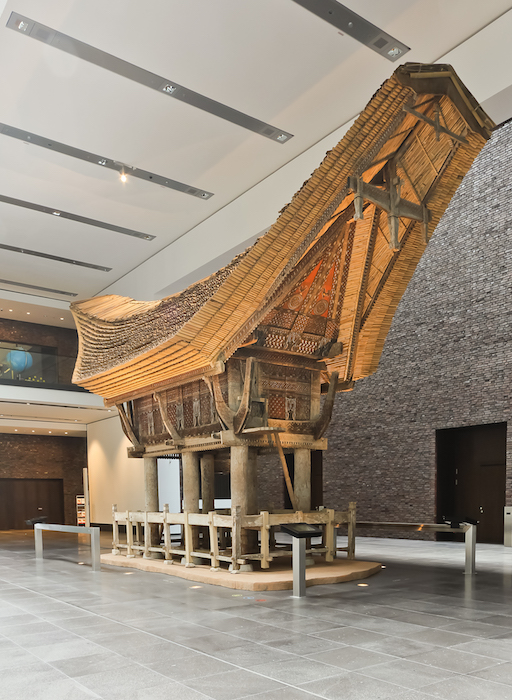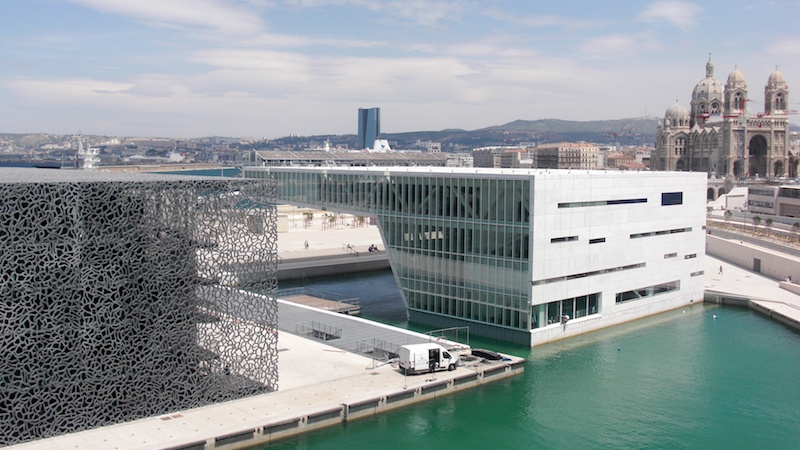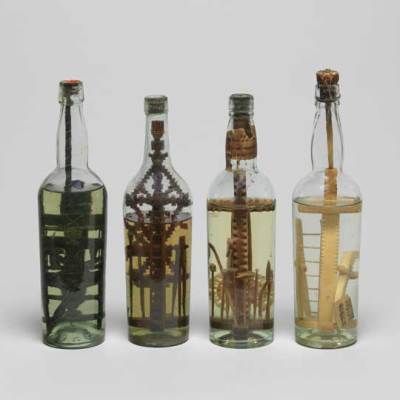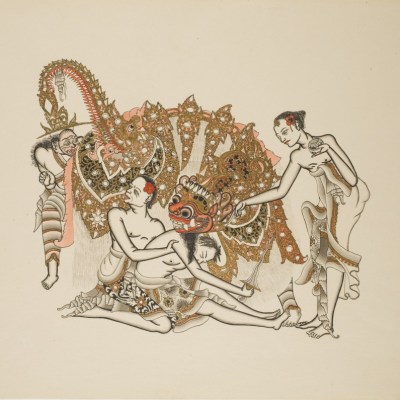Over the closing decades of the 19th century, specialist museums of a new kind were established in European capitals and university towns: Berlin’s formidable Museum für Völkerkunde in 1873, Paris’s Musée d’ethnographie in 1878, and nearly simultaneously in 1884, the Pitt Rivers in Oxford and the Museum of Archaeology and Anthropology in Cambridge. In due course there would be counterparts across Europe. But if the distinctively anthropological museum was an innovation of the period, collections of artefacts from around the world were not; from the 17th and 18th centuries they could also be found in royal collections and in the Ashmolean and the British Museum, among many other museums of antiquities and natural history.
Sometimes together with, and sometimes separated from, the arts of Asian, pre-Columbian and ancient ‘civilisations’, holdings of African, Oceanic and native American art and artefacts were dramatically enlarged in the late 19th and early 20th centuries, as the collections of travellers, missionaries, colonial officials, and professional fieldworkers were brought together. Intermittent enthusiasm on the part of scientific societies and governments funded major expeditions, which brought back great canoes, magnificently-painted house-façades, awe-inspiring totem poles, as well as relatively more portable masks, ritual assemblages, textiles, personal ornaments, weapons, and many other things from every part of the inhabited world. These collections are truly vast. Made up of hundreds of thousands of objects, in many institutions they are complemented by equally extensive photographic and documentary archives, which illuminate the original settings, and the cultures from which artefacts were drawn. Surely, then, these museums’ collections ought to be seen as extraordinary lenses upon human history, cultural diversity, and creativity.
A display of the archaeological and anthropological collections at the Pitt Rivers Museum, University of Oxford. © LatitudeStock/Alamy Stock Photo

From the 1970s onwards, however, responses to this question were often sceptical. Perceived as warehouses of colonial loot, ethnographic museums were charged with divesting non-Western works of the significance they once carried, in the heat and dust of ceremony, in the movement of dance or oratory, on the bodies of their former owners, in the flow of life. Among commentators and curators, there was much argument regarding approaches to display, too. The respective merits of exhibitions which sought to present ‘context’ and those which drew attention to the aesthetic qualities of works became repetitive. Either way, the ethnographic museum appeared flawed, illegitimate, and in retreat.
The critique was important and necessary, even though the collections’ histories were – and still are – commonly misunderstood. It is true that museums contain works such as the Benin bronzes, notoriously seized in the aftermath of conflict. A good many weapons were obtained in the course of colonial disarmament rather than through scientifically-minded collecting. But the great bulk of material was acquired through purchase or barter in the field, on terms that were considered reasonable at the time. Many local people actively sought to participate in colonial commerce and in fact were making collections themselves – of the varied and valued European objects they received in return. Many items in collections were not removed from customary use, but were made on commission for fieldworkers – they were models of things too large to be collected, or copies of sacred works or heirlooms that people were unwilling to sell. Collecting, in other words, was sometimes a matter of appropriation, but often one of innovation and invention.
This suggested that there was rather more to the collection than had typically been imagined. The museum contained not only a lot of objects, but also strange and fascinating stories of travel, encounter, and collecting. Those stories were potentially of great interest to the Europeans who visited museums and also to the descendants of those from whom collections had been made. From the 1980s onwards, curators became increasingly concerned to establish contact with communities and to work with them. They took collections, in the form of photographs of objects, back to the places they had come from; community members travelled across the world to see and study things made by their ancestors. Though difficult to fund, and sometimes fraught, these encounters turned out to be hugely rewarding for both community members and curators. For their part, museums learned a great deal about sometimes poorly documented objects, some of which had been held in their stores for centuries, which could now be revitalised through the interests and stories of living people. If these meetings took place behind the scenes, in the daunting but oddly affecting and intimate spaces of museum stores and workrooms, some curators have tried to make the museum’s emerging character as a zone of cross-cultural contact visible to wider publics. Through workshops, art demonstrations, and other public events, the museum became, more visibly and genuinely, a space of encounter and dialogue.
In the last 20 to 30 years there has been a worldwide renewal of museums and, while the greatest investments have been made in prestigious art institutions, museums of all kinds have been rebranded, renovated, and rehoused in stylish and engaging new buildings. Ethnographic collections have been amalgamated with others or otherwise recontextualised, often controversially. In the lead-up to the establishment of Paris’s Musée du quai Branly, now approaching its 10th anniversary, there was considerable rancour regarding the transfer of the bulk of the collection from the old Musée de l’Homme (which reopened last year, with a new focus on archaeology and human evolution). If the debate lingers in museum-studies classrooms, it has been superseded by the Quai Branly’s adventurous programme of temporary exhibitions. From in-depth presentations of the art of particular regions to broader and provocative themes such as hair and tattoo, the institution has enriched the Parisian and the European exhibition landscape, bringing magnificent works, world-class art traditions, and vital cultural issues into prominent view.
The best of the Quai Branly exhibitions have, moreover, been curatorially ambitious. ‘Kanak: l’art est une parole’, shown over the winter of 2013/14, was the richest exhibition to date of the art of the Kanak people of the French territory of New Caledonia. It included imposing architectural sculptures, woven exchange-valuables, and bamboo tubes featuring intricately engraved scenes of customary life and colonial experience. Yet – as if there had never been an issue – the show also moved decisively beyond the tired and false choices between ‘art’ and ‘ethnography’, aesthetics and contexts. Through varied evocations of how things were made, horticulture and the seasons, and in particular Kanak political authority and oratory – hence the title, ‘art is speech’ – the exhibition offered not only a spectacular visual encounter, but also a pathway into Melanesian sociality and customary culture. Nor was this culture evoked in some pure, archaic form. Alongside the main galleries were side exhibits featuring the Christian missionaries who subverted ancestral religion but did much to document it, charting the bloody confrontations over land and sovereignty that marked the territory in the late 19th century and the story of the more recent Kanak renaissance. The Quai Branly’s permanent display is awkwardly served by Jean Nouvel’s architecture, but the ‘plateau des collections’ nevertheless has strong features, such as an enriching but unobtrusive use of archival ethnographic film of environments and ceremonies. The works themselves are outstanding, and the museum is deservedly well visited.
An Indonesian rice barn displayed in the foyer of the Rautenstrauch-Joest-Museum, Cologne. Photo: Raimond Spekking/Wikimedia Commons

Cologne’s Rautenstrauch-Joest-Museum, subtitled Kulturen der Welt (cultures of the world), reopened to the public in a new, light-filled city-centre building in 2010. Its galleries are experimental, broadly successful and wide-ranging in the perspectives they offer. On the ground level, an Indonesian rice barn provides a lens upon many dimensions of human life. More surprisingly, one point of entry into the permanent exhibition presents the museum’s entire collection from one locality, the Massim region of Papua New Guinea, which includes dozens of clubs and fewer, but still numerous examples of other object types. Succeeding galleries present the colonial travels of the founding collectors, questions of prejudice in the present, and broader themes of human culture worldwide, such as religion, the body, life’s transitions, and the afterlife. The strength of this institution is to raise questions and to encourage visitors to ask their own questions, about the making of the museum’s collections and the categories and interests we bring to them – as well as the bigger issues of human life globally that the displays reveal.
Geneva’s fully redisplayed Musée d’ethnographie (MEG) is similarly engaging and intelligent, and likewise takes visitors into a staged open store, suggesting that the reserve holds much more than a lot of surplus stuff. Such collections can be conceived as realms of exploration, accessible to researchers and in many institutions to general visitors through online catalogues and in some cases actual, by-appointment access. Among the best such study centres is the one linked with Marseille’s MuCEM (France’s newest national institution, the Musée des civilisations de l’Europe et de la Méditerraneé). Like Antwerp’s Museum aan de Stroom (MAS), MuCEM turns a port setting to advantage, foregrounding topical issues such as trade, migration, and the mixing of faiths.
View of MuCEM, Marseille. Photo: Sébastien Bertrand/Wikimedia Commons

Europe’s largest current museum development project is the Humboldt Forum in Berlin’s reconstructed Schloss Palace, near to renowned state museums such as the Altes Museum, the Neues Museum, and the Pergamon. It will house the collections of the Ethnologisches Museum – formerly the Königliches Museum für Völkerkunde, possibly the largest, and arguably the richest of all European ethnographic collections – as well as those of the Museum für Asiatische Kunst, alongside public library and university facilities. Like other major projects, the initiative has been much debated, but the Forum’s aspiration to create and showcase ‘dialogue between the cultures of the world’ on the basis of a state-of-the-art display from collections much richer, more varied and historically more significant than those, for example, from Africa, Oceania and native America at the Metropolitan in New York, is genuinely very exciting.
Britain has seen nothing as dramatic as a major new world-cultures museum, but collections have been redisplayed in Brighton, Edinburgh, Exeter, and elsewhere. Major projects are underway at the Horniman and the Pitt Rivers; Cambridge’s Museum of Archaeology and Anthropology, along with the Pitt Rivers and the British Museum, has reinvigorated research around collections, launching collaborations with community members and artists. While the British Museum has mounted strong exhibitions, such as 2015’s ‘Indigenous Australia’, a gap remains between the institution’s compelling claim to be ‘a museum of the world, for the world’, and the relative marginalisation within the building’s permanent exhibits of Africa, native America and Oceania.
At a time when questions of cultural and religious difference are highly contentious, the renewal of displays that stimulate cross-cultural curiosity is encouraging, particularly since many of the museums concerned are attracting larger and more diverse audiences. Yet the picture is in no sense unambiguously positive. In Britain, the museums managed by local authorities have in particular suffered severe funding cuts, often from a poorly resourced starting point. Many lacked specialist curators, diminishing their capacity to interpret the remarkable works they care for. In France, similarly, rich and potentially revelatory ethnographic collections in the museums of many regional cities and towns are often dusty, or accessible only through displays dated to the point that they have become virtually unintelligible. In the Netherlands, one of Europe’s great collections, the Tropenmuseum, was a few years ago threatened with closure. Saved through a new national consortium of Dutch world-cultures museums, it is now lively, better visited and undergoing redisplay. But the experience underscores the fragility of the sector, relative to the booming world of contemporary art, now essentially a form of popular culture, which more easily attracts support and sponsorship.
The periodic revival of the repatriation debate reminds us that ethnographic collections stand in for histories of colonial exploitation, even if the objects were in fact fairly obtained, and sometimes willingly presented by local people interested in the representation of their cultures in metropolitan exhibitions. Certainly, ethnography was associated with the business of empire, both in practice and in theory. But it was also, from the start, distinguished by genuine efforts to document and celebrate cultures beyond Europe – efforts that are often considered important by the people concerned today. Ethnography collections need to be living collections, representative of cultural diversity in the present, as well as of traditions which suffered upheaval, the confrontation of empire, at the time of the museums’ formation. Renewed museums have the capacity to represent not only world cultures, but also the interconnectedness of the world, starting with the puzzling and sometimes problematic stories of how their collections reached Europe. Conceived ambitiously rather than apologetically, museums of ethnography and world culture now have more to offer than ever before.
From the April issue of Apollo: preview and subscribe here.


